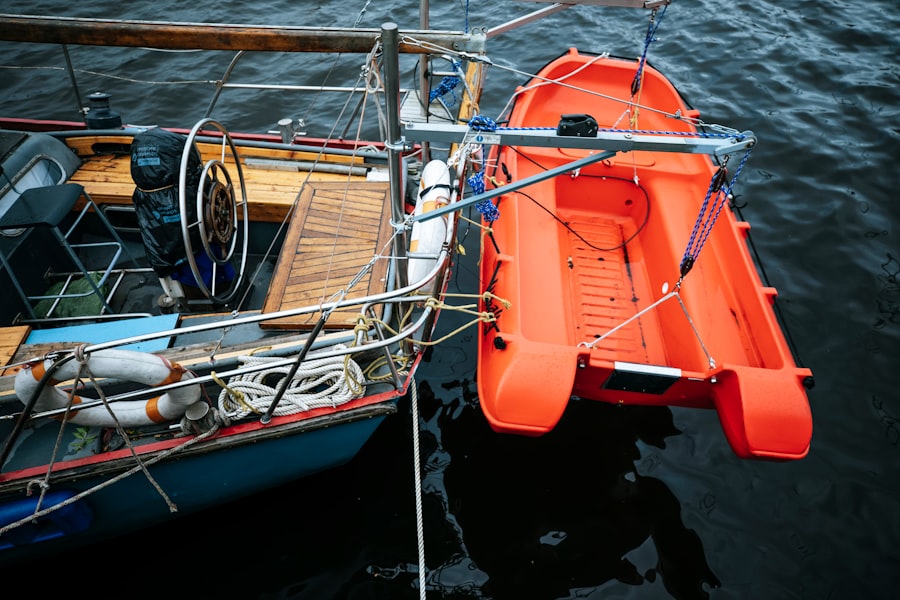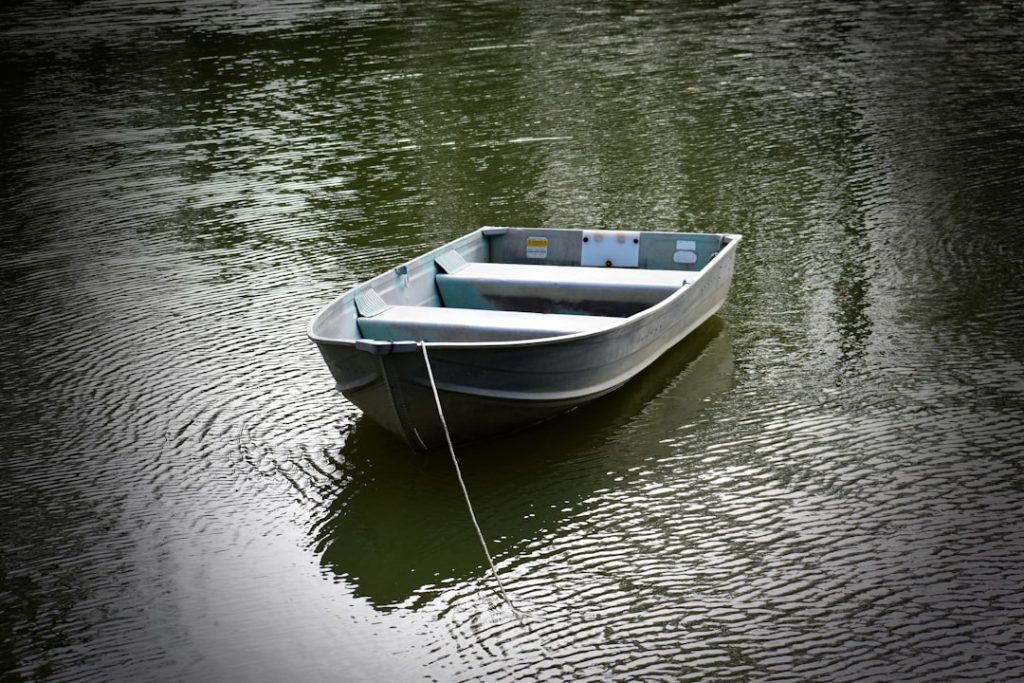Rigid Inflatable Boats (RIBs) have gained significant popularity in the maritime world due to their unique design and versatile applications. Characterized by a solid hull made from materials such as fiberglass or aluminum, combined with inflatable tubes, RIBs offer a blend of stability, speed, and buoyancy that is hard to match. Originally developed for military and rescue operations, these boats have evolved into a favored choice for recreational boating, commercial use, and even competitive racing.
Their design allows them to navigate various water conditions, making them suitable for everything from calm lakes to rough seas. The construction of RIBs typically involves a rigid hull that provides structural integrity and performance, while the inflatable tubes enhance safety and comfort. This combination allows RIBs to handle choppy waters with ease, providing a smooth ride even in adverse conditions.
The lightweight nature of these boats also contributes to their speed and maneuverability, making them an attractive option for those who seek adventure on the water. As the demand for versatile and reliable watercraft continues to grow, RIBs stand out as a practical solution for both leisure and professional maritime activities.
Key Takeaways
- Rigid Inflatable Boats (RIBs) combine a solid hull with inflatable tubes for stability and performance.
- Key advantages include durability, lightweight design, and excellent buoyancy.
- Important features to consider are hull material, tube construction, and engine compatibility.
- Regular maintenance and safety checks are essential for optimal performance and longevity.
- Selecting the right RIB depends on intended use, size requirements, and budget considerations.
Advantages of Rigid Inflatable Boats
One of the most significant advantages of RIBs is their exceptional stability. The inflatable tubes act as buoyancy aids, allowing the boat to remain upright and stable even in turbulent waters. This stability is particularly beneficial for activities such as diving, fishing, or rescue operations, where a steady platform is essential.
Additionally, the design of RIBs minimizes the impact of waves, providing a smoother ride that reduces fatigue for passengers and crew alike. Another notable benefit is the versatility of RIBs. They can be equipped with various engines, ranging from small outboards for leisurely cruising to powerful motors for high-speed pursuits.
This adaptability makes them suitable for a wide range of activities, including water sports, transportation, and even as tenders for larger vessels. Furthermore, RIBs are often designed with modular features that allow for customization based on specific needs, such as seating arrangements or storage options. This level of flexibility ensures that users can tailor their RIB experience to suit their preferences and requirements.
Features to Look for in Rigid Inflatable Boats

When considering the purchase of a RIB, several key features should be evaluated to ensure that the boat meets your specific needs. First and foremost is the hull material. Fiberglass hulls are known for their durability and resistance to corrosion, while aluminum hulls offer lightweight strength and ease of maintenance.
Each material has its advantages, so understanding the intended use of the boat can help in making an informed decision. Another critical feature is the size and configuration of the inflatable tubes. The diameter and design of these tubes can significantly affect the boat’s performance and stability.
Larger tubes generally provide better buoyancy and stability but may also increase drag. Additionally, consider the layout of seating and storage options within the boat. A well-designed interior can enhance comfort during long outings and ensure that all necessary gear can be stowed securely.
Finally, look for safety features such as non-slip surfaces, grab rails, and built-in flotation devices that can enhance overall safety while on the water.
Different Types of Rigid Inflatable Boats
| Type | Length (ft) | Typical Use | Material | Capacity (persons) | Max Speed (knots) |
|---|---|---|---|---|---|
| Sport RIB | 12-20 | Recreational, Watersports | Hypalon or PVC tubes, Fiberglass hull | 4-8 | 30-50 |
| Commercial RIB | 20-40 | Patrol, Rescue, Workboat | Hypalon tubes, Aluminum or fiberglass hull | 8-20 | 25-40 |
| Military RIB | 15-30 | Special Operations, Patrol | Hypalon or Neoprene tubes, Reinforced hull | 6-12 | 40-60 |
| Dive RIB | 15-25 | Diving Support | Hypalon tubes, Fiberglass hull | 6-10 | 20-35 |
| Inflatable Rescue Boat (IRB) | 12-18 | Rescue Operations | Hypalon or PVC tubes, Fiberglass or aluminum hull | 4-6 | 25-45 |
RIBs come in various types, each tailored for specific applications and user preferences. One common type is the leisure RIB, designed primarily for recreational use such as day cruising, fishing, or water sports. These boats often feature comfortable seating arrangements and ample storage space for gear and equipment.
They are typically powered by outboard motors that provide sufficient speed for leisurely outings while maintaining fuel efficiency. Another category is the commercial RIB, which is built to withstand rigorous use in demanding environments. These boats are often utilized by law enforcement agencies, search and rescue teams, and marine transport services.
Commercial RIBs are designed with durability in mind, featuring reinforced hulls and heavy-duty components that can endure harsh conditions. They may also include specialized equipment such as navigation systems or emergency response gear. For those interested in high-speed performance, racing RIBs are specifically engineered for competitive events.
These boats are lightweight and streamlined, often equipped with powerful engines that allow them to reach impressive speeds on the water. Racing RIBs prioritize speed and agility over comfort, making them ideal for enthusiasts looking to participate in competitive racing circuits.
Maintenance Tips for Rigid Inflatable Boats
Proper maintenance is crucial for ensuring the longevity and performance of a RIRegular cleaning is one of the most straightforward yet essential tasks. After each outing, it is advisable to rinse the boat with fresh water to remove salt, sand, or debris that could cause wear over time. Pay special attention to the inflatable tubes; using a mild soap solution can help maintain their integrity without damaging the material.
Inspecting the hull and tubes regularly is also vital. Look for signs of wear or damage such as cracks or punctures in the inflatable sections. If any issues are detected, they should be addressed promptly to prevent further deterioration.
Additionally, checking the engine and other mechanical components should be part of routine maintenance. Regular oil changes, fuel system checks, and battery inspections will help ensure that the boat operates smoothly when needed.
Safety Considerations for Rigid Inflatable Boats

Safety should always be a top priority when operating any watercraft, including RIBs. One fundamental aspect is ensuring that all passengers wear life jackets at all times while on board. Life jackets should be appropriate for each individual’s size and weight to provide adequate buoyancy in case of an emergency.
Additionally, it is essential to have safety equipment readily available on board, including flares, a first aid kit, fire extinguishers, and a whistle or horn for signaling. Understanding weather conditions before heading out is another critical safety consideration. RIBs are capable of handling rough waters; however, operators should always be aware of changing weather patterns that could pose risks.
Monitoring local forecasts and being prepared to return to shore if conditions worsen can prevent dangerous situations from arising. Furthermore, it is advisable to inform someone on land about your planned route and expected return time before embarking on any boating adventure.
Choosing the Right Rigid Inflatable Boat for Your Needs
Selecting the right RIB involves careful consideration of various factors tailored to your specific needs and intended use. Begin by assessing how you plan to use the boat—whether for leisure activities like fishing or water sports or for more demanding tasks such as rescue operations or commercial transport. This assessment will guide you in determining the appropriate size, power requirements, and features necessary for your intended activities.
Budget is another crucial factor in your decision-making process. RIBs can vary significantly in price based on size, materials used, and additional features. It’s essential to establish a budget that not only covers the initial purchase but also accounts for ongoing maintenance costs such as insurance, storage fees, and fuel expenses.
Additionally, consider whether you prefer new or used models; while new boats come with warranties and modern features, used boats can offer significant savings if they are well-maintained.
Where to Find Rigid Inflatable Boats for Sale
Finding a suitable RIB for sale can be accomplished through various channels depending on your preferences and budget constraints. Marine dealerships often carry new models from reputable manufacturers and provide valuable insights into different options available on the market. Visiting these dealerships allows potential buyers to see boats firsthand and ask questions about specifications or features directly from knowledgeable staff.
Online marketplaces have also become increasingly popular for purchasing RIBs. Websites dedicated to boating sales often feature listings from both private sellers and dealers across various regions. These platforms allow users to filter searches based on specific criteria such as price range, size, or brand preferences.
However, when purchasing online, it’s crucial to conduct thorough research on the seller’s reputation and ensure that any used boats are inspected before finalizing a purchase. In addition to dealerships and online platforms, boat shows present an excellent opportunity to explore multiple options in one location. These events often showcase a wide range of models from different manufacturers, allowing potential buyers to compare features side by side while also taking advantage of special show pricing or promotions.
Engaging with industry professionals at these events can provide valuable insights into current trends and innovations within the world of rigid inflatable boats.


